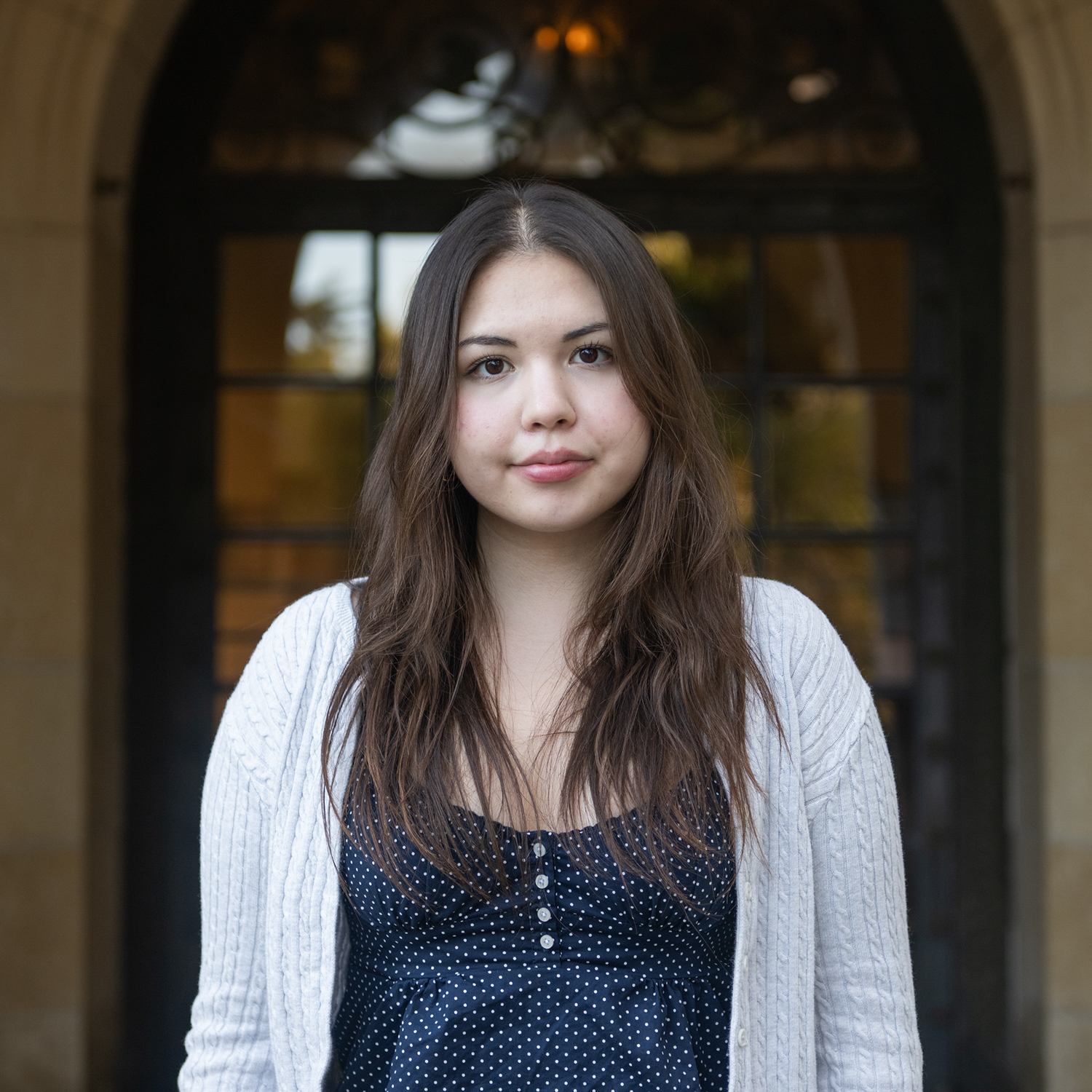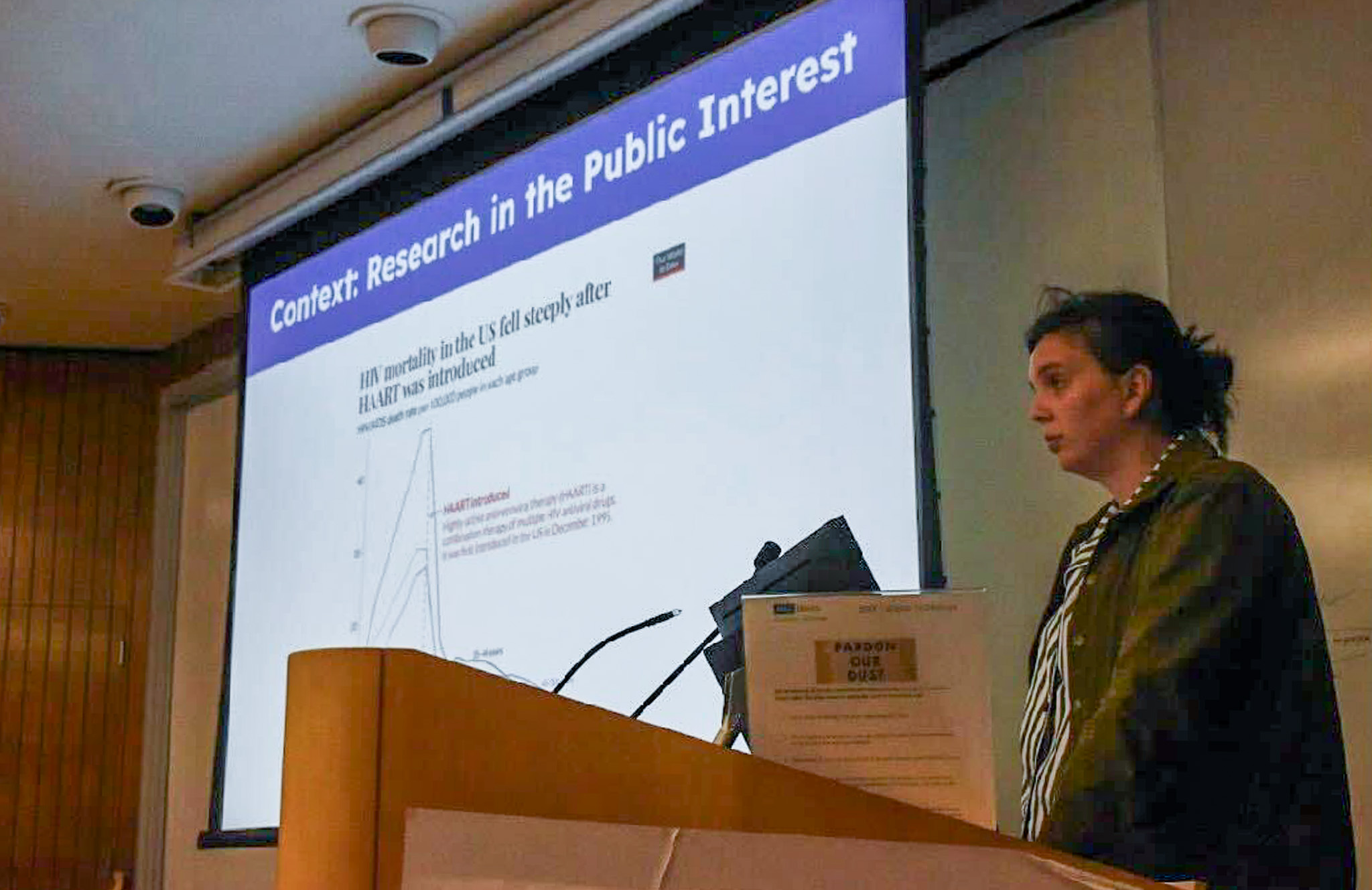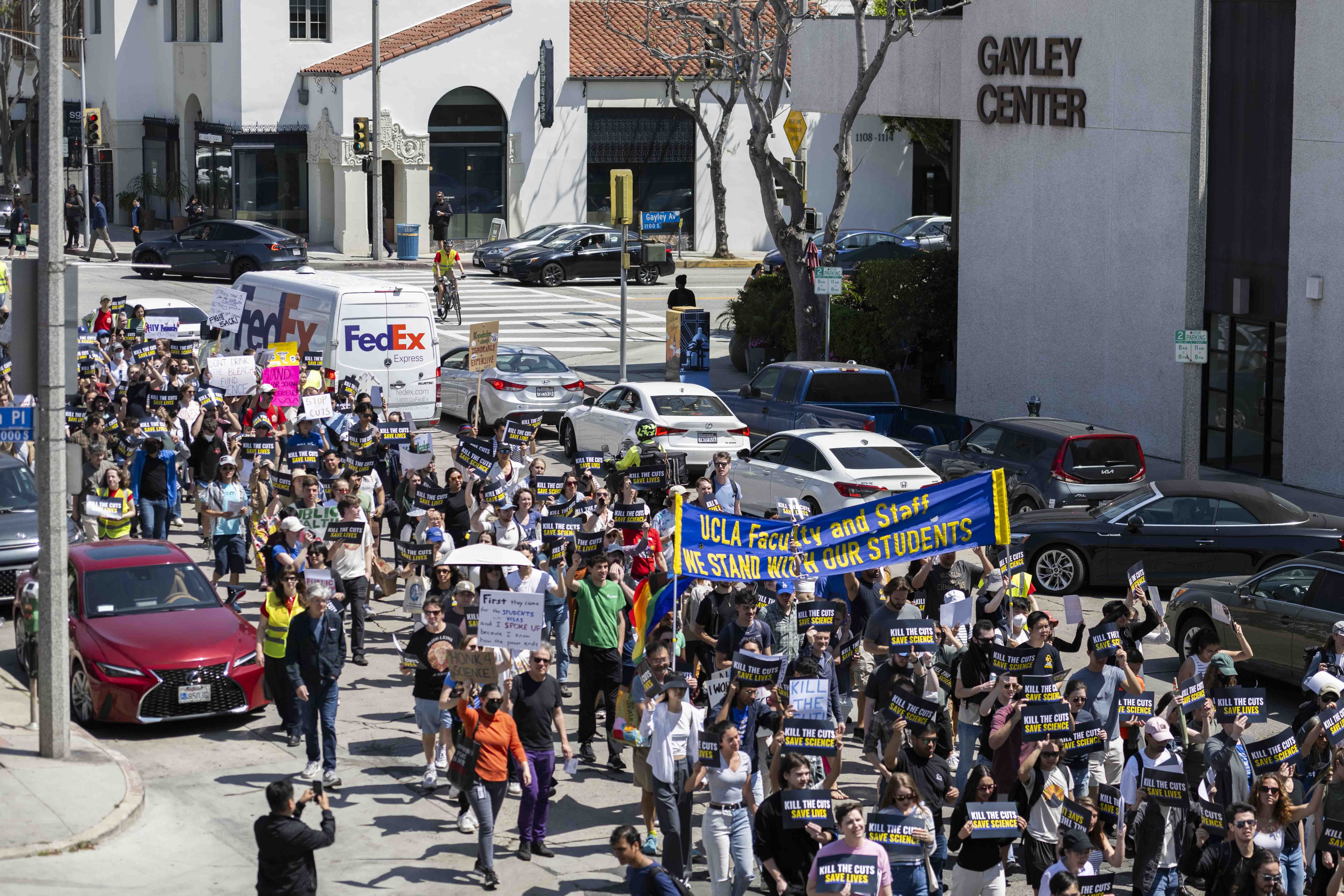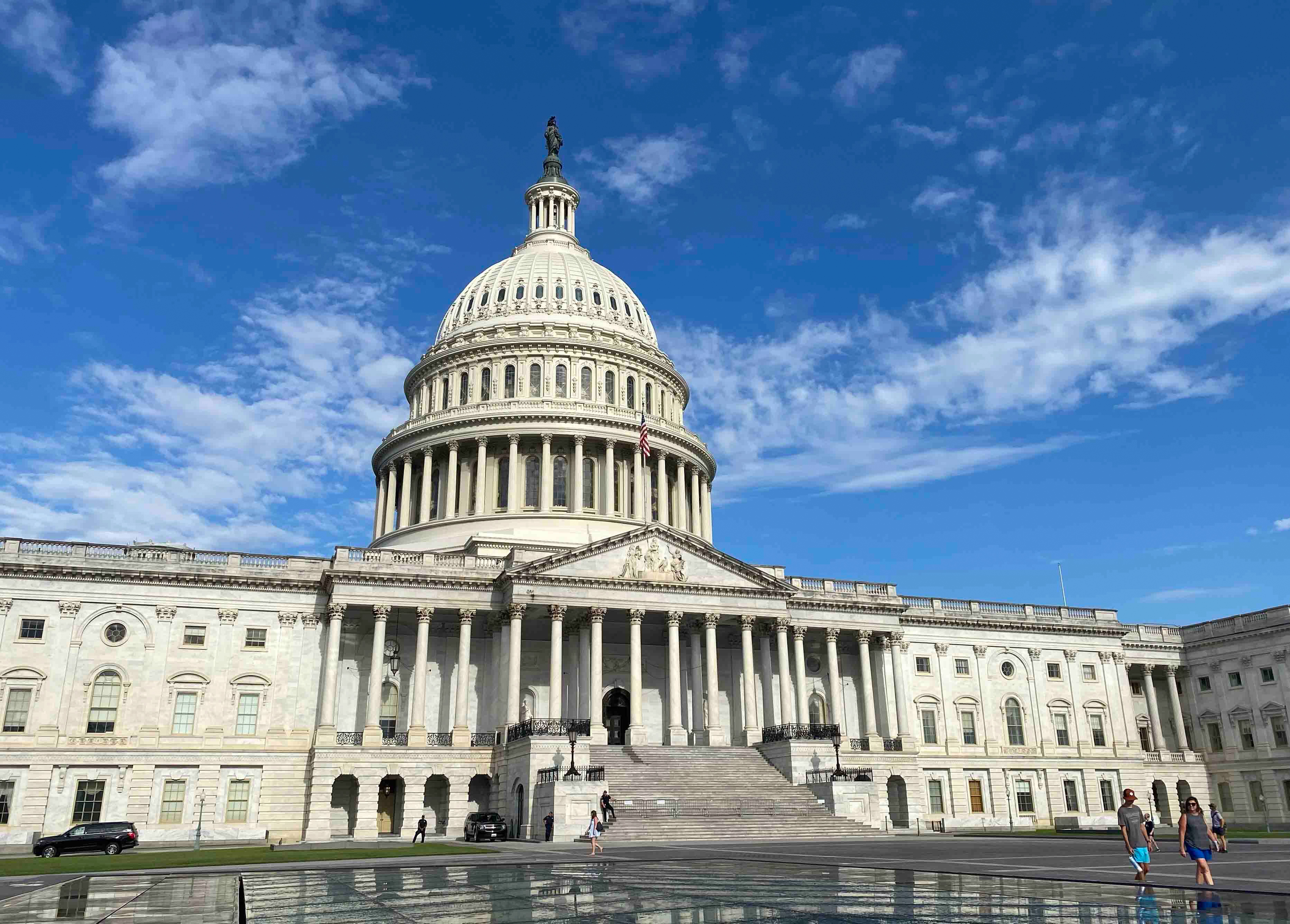UCLA researchers express concerns on academic funding cuts, NIH indirect costs cap
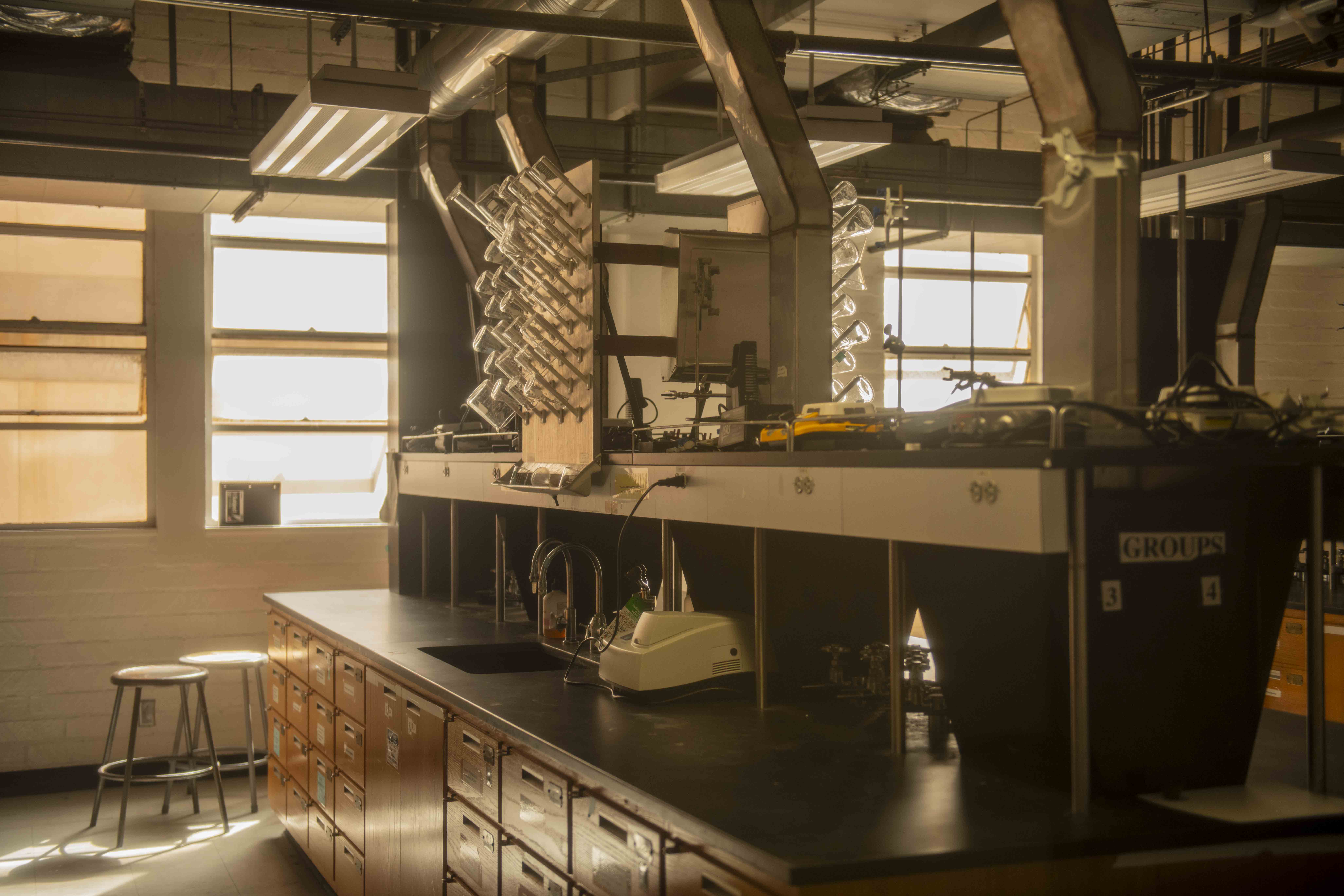
A chemistry lab is pictured. Many science-based labs have been affected by the academic funding cuts. (Libby Li/Daily Bruin)
This post was updated April 27 at 10:17 p.m.
UCLA researchers expressed concerns about academic funding cuts under the Trump administration.
The National Institutes of Health announced it would cap indirect costs for its grants at 15%, a decline from its previous average for indirect cost rates between 27% and 28%. A federal judge blocked the funding cuts April 4, but the NIH appealed in response, continuing the ongoing legal battle.
UC President Michael Drake announced in a March 19 email that the University would freeze hiring in response to federal and state budget challenges, including the NIH grants. Gov. Gavin Newsom has proposed hundreds of millions of dollars worth of cuts to the University’s budget for the 2025–2026 fiscal year, furthering the need for the freeze, Drake said in the email.
[Related: UC implements systemwide hiring freeze following federal, state threats to budget]
Indirect costs, which are typically divided into facilities and administration costs, are expenses that cover research infrastructure and operational expenses going toward facilities, maintenance and certain employees.
UCLA’s current NIH indirect funding rate is 57.5%, which means that the university receives 57.5 cents in indirect funding per every dollar in direct funding for researchers, as negotiated between the university and the United States Department of Health and Human Services.
An indirect funding rate cap at 15% would result in a loss of nearly $200 million in funding for UCLA.
“We are closely monitoring administration executive orders related to federally funded research while we continue to do the important work that NIH funds us for,” said Stett Holbrook, a spokesperson for the UC Office of the President, in an emailed statement. “NIH-funded research continues while the proposed federal changes to NIH funding policies are being litigated.”
UCLA’s Office of Contract and Grant Administration has advised researchers to continue using the previously negotiated indirect rate in preparing grant applications, according to its website.
S. Thomas Carmichael, the chair of the neurology department at UCLA, said one potential outcome is that indirect funding rate reductions may vary across institutions instead of the indirect rate being 15% across the board.
UCLA’s current indirect funding does not fully support the neurology department’s indirect costs associated with grants, such as administrative employees, and is supplemented with clinical income and philanthropic funding, Carmichael said. He added that clinical income and other sources of funding – such as philanthropy and industry, which are more restrictive – would not be able to make up the funding shortfall if indirect funding is capped.
A funding cut would jeopardize the university’s ability to manage grants and support trainees in accordance with regulations, Carmichael added, impacting innovation, the discovery of new therapeutics and an understanding of basic disease principles.
“It would devastate the ability of the institution to support research,” Carmichael said. “The funding cut, of course, is not to the direct research itself but to the necessary infrastructure and support to carry it out. UCLA doesn’t have the backup, the reserves or the resources necessary to carry out that support and that backup to keep the research going.”
Burt Cowgill, an associate professor in residence of health policy and management, said he is attempting to continue his work as usual. He added that there are concerns among researchers regarding specific areas of research that may be more at risk than others.
“For many of us that seek and/or have NIH funding, the question is, what will they be funding moving forward, not just at the amounts, but what topics will be of interest,” he said. “How they frame research being conducted in these areas may change, so we all need to be nimble about that.”
Cowgill added that UCLA and the UC as a whole have served as leaders in addressing health disparities, and to continue this work, researchers from both will have to reframe their research and how they reach vulnerable populations.
Jason Hinman, an associate professor in residence of neurology and the Interim Co-Center Director of the Mary S. Easton Center for Alzheimer’s Research and Care at UCLA, said the “catastrophic” NIH funding cut underscores the impact of philanthropic funding in enabling research. He added that the cut would make it more competitive for researchers to secure philanthropic and foundation funding in the future.
About 70% of research activity at the Hinman Lab is supported by NIH funding, with the other 30% supported by philanthropy, foundation grants and other funders, Hinman said. In his lab, indirect funding covers costs such as the maintenance of biosafety cabinets to perform human cell culture experiments, the care of mice used for research and clinical space to study human subjects, he added.
Hinman said he will likely pause new hiring decisions for the remainder of the year until the impacts of the potential budget cut are realized.
“I wouldn’t want to bring new trainees into that environment only to then tell them in six months that we can’t support the number of animals needed to complete your study or to provide you with operational facilities to execute the cell culture,” he said.
Hinman said the cuts could make research opportunities more difficult to access for early-career researchers.
“For students and early-stage scientists just starting out, this is a signal that there’s a lack of commitment to biomedical science in the United States, and that’s a travesty, because we’ve – for many decades – been the world’s leader in that,” Hinman said.
Faculty throughout the UC have led an effort to have researchers across California and the nation sign a letter which advocates for the support of NIH funding, Holbrook said in the statement. He added that – as of March 5 – 2,500 researchers from across the nation had signed onto the letter.
Steven Cramer, a professor of neurology, said the suddenness and severity of the cuts are shortsighted. Cramer added that there is currently budgetary uncertainty in many science departments at UCLA, which is concerning for their vitality and solvency.
“More than anything, we’re crestfallen; we’re greatly saddened,” Cramer said. “This change is sudden, draconian … and stands to substantially hobble – if not destroy – much of academic science.”
NIH direct funding is not being impacted as of now, and Cramer’s research operations are currently unaffected, he said. However, he said that he is uncertain of whether he will be able to continue doing research and what his career entails in the future.
“This is terrifying – the thing that I grew up and aspired my whole life to be part of has just been slashed in the jugular with poor forethought and little planning,” Cramer said. “We don’t know if professors are going to have jobs in the future. We don’t know if society is going to support the research endeavor anymore.”
Cramer said he hopes government leaders will prevent the proposed changes to scientific research, emphasizing its importance in bettering human lives.
“Please do not destroy American science,” Cramer said.
Despite the current threats to research, Cramer said students should still pursue scientific research. Scientific advancements have improved the quality of life for people worldwide and will continue to, he added.
“There’s never been a better time to be a scientist, to be a clinician-scientist, as in my case,” Cramer said. “Things will stabilize, and we will get through this. Science will prevail – good people will do good research.”


